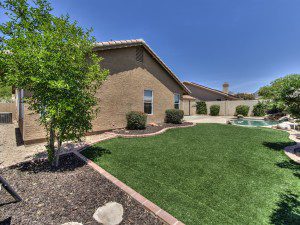 But times have definitely changed. In the next generation of real estate, we’re a much more mobile society. Millennials, Generations X and Y don’t necessarily want to be tied down by roots. They want the freedom to travel, or to take that new job, whether it’s in Chicago, Los Angeles, or Dubai. Homeownership doesn’t have the same status to them that it had to earlier generations. And, they’ve heard the horror stories of home ownership from those who bought during the market high only to see their home values plummet during the recession.
But there are still many who want to be homeowners. And, the approach is different now, then it may have been a generation ago. If you’re in your 20s or 30s today and considering buying a home vs. renting, here are some things to consider.
But times have definitely changed. In the next generation of real estate, we’re a much more mobile society. Millennials, Generations X and Y don’t necessarily want to be tied down by roots. They want the freedom to travel, or to take that new job, whether it’s in Chicago, Los Angeles, or Dubai. Homeownership doesn’t have the same status to them that it had to earlier generations. And, they’ve heard the horror stories of home ownership from those who bought during the market high only to see their home values plummet during the recession.
But there are still many who want to be homeowners. And, the approach is different now, then it may have been a generation ago. If you’re in your 20s or 30s today and considering buying a home vs. renting, here are some things to consider.
5 Tips for Millennial Home Buyers By Joe Szabo, Scottsdale Real Estate Team
 But times have definitely changed. In the next generation of real estate, we’re a much more mobile society. Millennials, Generations X and Y don’t necessarily want to be tied down by roots. They want the freedom to travel, or to take that new job, whether it’s in Chicago, Los Angeles, or Dubai. Homeownership doesn’t have the same status to them that it had to earlier generations. And, they’ve heard the horror stories of home ownership from those who bought during the market high only to see their home values plummet during the recession.
But there are still many who want to be homeowners. And, the approach is different now, then it may have been a generation ago. If you’re in your 20s or 30s today and considering buying a home vs. renting, here are some things to consider.
But times have definitely changed. In the next generation of real estate, we’re a much more mobile society. Millennials, Generations X and Y don’t necessarily want to be tied down by roots. They want the freedom to travel, or to take that new job, whether it’s in Chicago, Los Angeles, or Dubai. Homeownership doesn’t have the same status to them that it had to earlier generations. And, they’ve heard the horror stories of home ownership from those who bought during the market high only to see their home values plummet during the recession.
But there are still many who want to be homeowners. And, the approach is different now, then it may have been a generation ago. If you’re in your 20s or 30s today and considering buying a home vs. renting, here are some things to consider.








 Please note that this Scottsdale Real Estate Blog is for informational purposes and not intended to take the place of a licensed Scottsdale Real Estate Agent. The Szabo Group offers first class real estate services to clients in the Scottsdale Greater Phoenix Metropolitan Area in the buying and selling of Luxury homes in Arizona. Award winning Realtors and Re/MAX top producers and best real estate agent for Luxury Homes in Scottsdale, The Szabo group delivers experience, knowledge, dedication and proven results. Contact Joe Szabo at 480.688.2020,
Please note that this Scottsdale Real Estate Blog is for informational purposes and not intended to take the place of a licensed Scottsdale Real Estate Agent. The Szabo Group offers first class real estate services to clients in the Scottsdale Greater Phoenix Metropolitan Area in the buying and selling of Luxury homes in Arizona. Award winning Realtors and Re/MAX top producers and best real estate agent for Luxury Homes in Scottsdale, The Szabo group delivers experience, knowledge, dedication and proven results. Contact Joe Szabo at 480.688.2020, 




